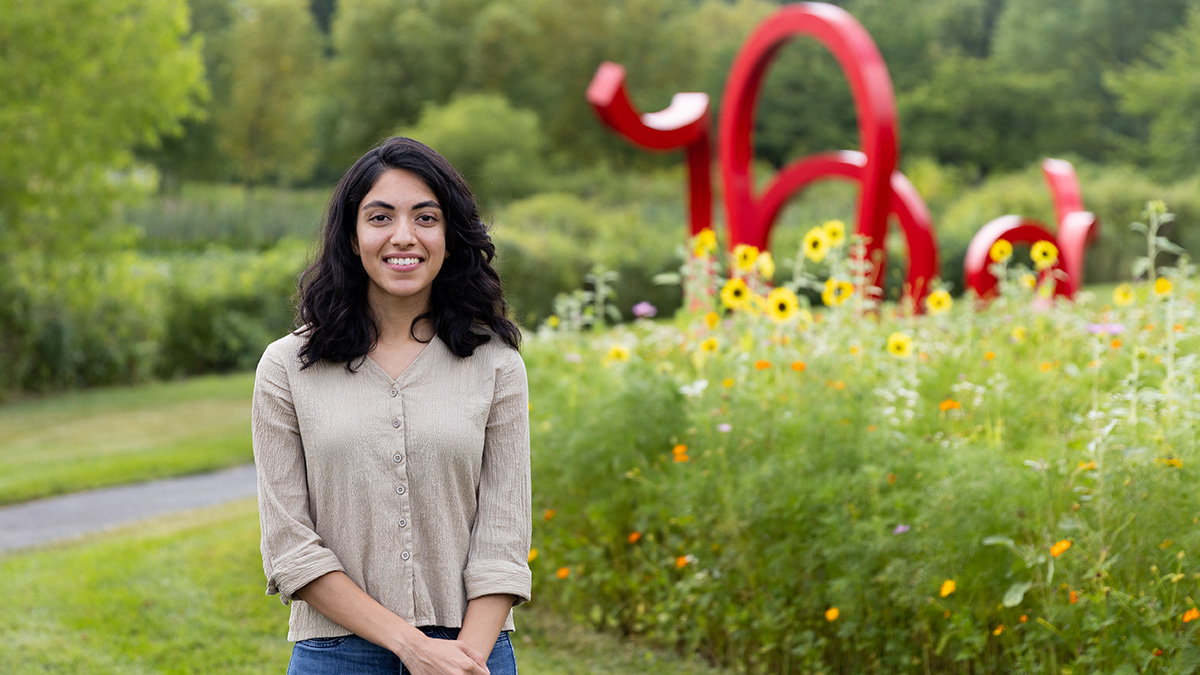
I’ve been interested in brain-machine interfaces since I was in high school, when I saw a TED talk where a machine interface was used to demonstrate how to “hack” someone else’s nervous system.
This fascination developed further in undergrad, where I started to become interested in combining computer science and biology. Wanting to pursue big questions at the intersection of these two fields, I got in touch with Carsen Stringer and Marius Pachitariu, group leaders at HHMI’s Janelia Research Campus who were doing large-scale neural recordings to understand brain activity. I initially started as a remote research consultant in their labs and then applied to the 2022 cohort of the Hopkins Neuroscience Program so I could continue this research as a graduate student.
My thesis project focuses on the relationship between behavior and sensory information in mice. We know that activity in the visual cortex is driven by visual input from the eye, but previous work from Carsen and Marius shows that there is other activity in this area related to mice movement, particularly facial movements, such as whisking or sniffing. My goal was to quantify and characterize this behavior.
We developed Facemap, which uses machine learning to track different points on the mouse’s face, and link that to neural activity. This gets us a step closer to understanding total brain activity and how it relates to behavior. Facemap is a tool I can use to continue looking further into the relationship between behavior and sensory information. We also made it publicly available so many labs can advance their work in sensory neuroscience.
What’s nice about doing my thesis work at Janelia is that my mentors, Carsen and Marius, are very open to suggestions and let me take the lead on my project. This allows me to truly explore ideas and have the freedom to pursue questions that interest me. I’m also in an environment that makes it easy to connect with scientists of various career stages and disciplines through seminars and interest groups.
Despite the distance from Hopkins, I’ve been able to keep in touch with my cohort through departmental events, like the crab bake and holiday party. I also invite my cohort to do activities near where I live in Arlington, VA, like going to the Smithsonian National Museum of Natural History. Even though everyone gets busy in their labs, we still make time to get together and have fun.
I’ve always been interested in doing research that I know will have a major impact. Through the Hopkins Neuroscience Program and Janelia, I have the freedom, resources, and support to do that. Facemap is already having an impact in hundreds of labs. I don’t think I could have pursued such ambitious goals in any other graduate program.
Atika Ibrahim Syeda is doing her PhD at HHMI Janelia Research Campus as part of the Joint Graduate Program with Johns Hopkins university. Her current work focuses on using a brain-machine interface to study the role of behavioral and sensory signals in the mouse visual cortex.
